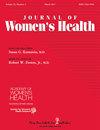How Frequently Is Ultrasound Required to Diagnose Polycystic Ovary Syndrome in a Clinical Population?
IF 3
3区 医学
Q1 MEDICINE, GENERAL & INTERNAL
引用次数: 0
Abstract
Background: Polycystic ovary syndrome (PCOS) is a common endocrine condition, affecting up to 20% of reproductive aged women worldwide. Polycystic ovarian morphology (PCOM) may be present, but is not required for diagnosis. Our study seeks to evaluate the utility of ultrasound in diagnosing or excluding PCOS by 2023 International Guidelines Criteria. Materials and Methods: Subjects were patients seen in a tertiary care referral clinic in whom other causes of hyperandrogenism (HA) were ruled out. All underwent complete history, physical, modified Ferriman Gallwey scoring, and serum androgen testing; followed by transvaginal ultrasound (TVUS) to assess ovarian morphology if indicated. PCOM was identified as antral follicle count ≥20 and/or ovarian volume >10 mL in at least one ovary. After clinical classification, PCOS was diagnosed by at least two of three: biochemical/clinical HA, ovulatory dysfunction (OD), and PCOM. Statistics were calculated using Fisher's exact test and chi-square. Results: In total, 454 subjects were included. 299 were classified as group A/B and did not require TVUS for diagnosis. Of 82 subjects with HA alone, 50 (61.0%) were classified as group C after demonstrating PCOM. Fifty-five subjects had OD alone, 37 (67.3%) of which were classified as group D based on PCOM. In total, 137/454, or 30.2% of subjects required TVUS for diagnosis or exclusion of PCOS. Conclusions: TVUS was necessary in less than one-third of subjects, primarily identifying PCOS groups C or D. Selective use of ovarian ultrasonography may reduce the costs and complexity of epidemiological and clinical studies for PCOS.在临床人群中,超声波诊断多囊卵巢综合征的频率是多少?
背景:多囊卵巢综合征(PCOS多囊卵巢综合征(PCOS)是一种常见的内分泌疾病,影响着全球多达 20% 的育龄妇女。多囊卵巢形态(PCOM)可能存在,但并非诊断的必要条件。我们的研究旨在评估超声波在根据 2023 年国际指南标准诊断或排除多囊卵巢综合症方面的效用。材料与方法:受试者是在一家三级医疗转诊诊所就诊并排除了其他高雄激素症(HA)病因的患者。所有受试者均接受了完整的病史、体格检查、改良费里曼-盖尔韦评分和血清雄激素检测;如果有必要,还接受了经阴道超声检查(TVUS)以评估卵巢形态。至少一个卵巢的前卵泡数≥20和/或卵巢体积>10 mL即为多囊卵巢综合征。临床分类后,多囊卵巢综合症的诊断标准为生化/临床 HA、排卵功能障碍 (OD) 和 PCOM 三项中的至少两项。统计采用费雪精确检验和卡方检验。结果共纳入 454 名受试者。其中 299 例被归为 A/B 组,无需 TVUS 诊断。在 82 例仅有 HA 的受试者中,50 例(61.0%)在显示出 PCOM 后被归为 C 组。55 例受试者仅有 OD,其中 37 例(67.3%)根据 PCOM 被归为 D 组。总共有 137/454 例受试者(占 30.2%)需要通过 TVUS 诊断或排除多囊卵巢综合症。结论:选择性使用卵巢超声波检查可降低多囊卵巢综合症流行病学和临床研究的成本和复杂性。
本文章由计算机程序翻译,如有差异,请以英文原文为准。
求助全文
约1分钟内获得全文
求助全文
来源期刊

Journal of women's health
医学-妇产科学
CiteScore
6.60
自引率
5.70%
发文量
197
审稿时长
2 months
期刊介绍:
Journal of Women''s Health is the primary source of information for meeting the challenges of providing optimal health care for women throughout their lifespan. The Journal delivers cutting-edge advancements in diagnostic procedures, therapeutic protocols for the management of diseases, and innovative research in gender-based biology that impacts patient care and treatment.
Journal of Women’s Health coverage includes:
-Internal Medicine
Endocrinology-
Cardiology-
Oncology-
Obstetrics/Gynecology-
Urogynecology-
Psychiatry-
Neurology-
Nutrition-
Sex-Based Biology-
Complementary Medicine-
Sports Medicine-
Surgery-
Medical Education-
Public Policy.
 求助内容:
求助内容: 应助结果提醒方式:
应助结果提醒方式:


